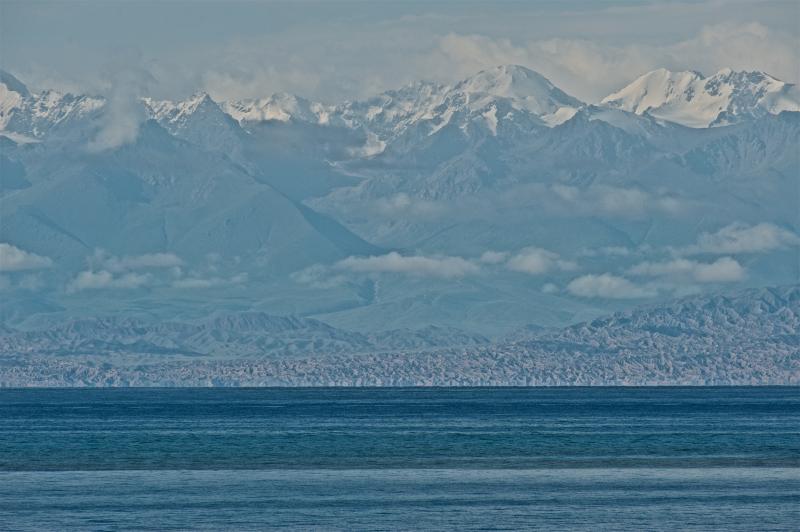Supreme Witness — our newspaper has repeatedly addressed the need to introduce Kyrgyz issuers to foreign investment markets. This issue has been discussed in both the State Financial Supervision Authority and the Zhogorku Kenesh, with opinions ranging from «it’s simple, we’ll do it right away» to «why do we need this at all?»
Recently, the draft «Program for the Kyrgyz Republic to enter the international capital markets for 2022–2025,» developed by the National Investment Agency, was published on the Government website for public consultations. It is worth noting that the text appears to be a professionally researched study of this highly specialized and challenging topic. We would like to contribute to the public discussion as well.
Why this matters
There have always been two arguments against entering global capital markets through securities in our country.
Regarding the necessity of issuing sovereign bonds, the Ministry of Finance and some deputies argued that it is much more profitable for us to borrow money from China at minimal interest than to pay market interest (5 and higher) on Eurobonds.
This argument is entirely detrimental. Chinese loans only nominally have low interest rates. In reality, they are granted not for general budget purposes (as with most sovereign loans), but for specific projects in which execution is inevitably entrusted to Chinese contractors. The real cost of these borrowings lies not in the formal interest on the loan, but in the overestimated estimates of work and their generally low quality. Recall the Chinese loan for the repair of the Bishkek thermal power plant, which later caused Sapar Isakov and a group of officials to suffer (whether justifiably or not is another matter). Recall the loans for the repair and construction of roads, which were then built over the years in violation of all conceivable norms. Additionally, do not forget to factor in the cost of the loan by the amount of kickbacks to Kyrgyz officials from the contractor – these are also unproductive expenses.
Thus, Chinese loans are, in fact, much more expensive than borrowing through the issuance of Eurobonds.
The argument against the entry of large state-owned companies into the equity capital markets was never explicitly stated due to its disgraceful nature, but it effectively acted as a deterrent to exploring this issue. To successfully sell shares to foreign institutional investors, a local company must meet high criteria for transparency and corporate governance. It is evident that with a Western activist investor in the capital and on the board of directors, siphoning profits from deals with friendly contractors, inflating the staff by hiring numerous relatives, and engaging in other traditional state-owned company practices would be considerably more challenging. Therefore, such ideas encountered passive resistance from potential issuers.
If we disregard resistance for the reasons mentioned above, the entry of both the state and large commercial enterprises into external capital markets would yield exceptional benefits. It can be stated more definitively: under the current geopolitical conditions, entering capital markets without ties to the region’s dominant powers is our country’s chance for independent accelerated development.
Sovereign Rating
The first point of the plan addresses measures to improve the sovereign rating of the Kyrgyz Republic (for reference, it was downgraded from relatively investment-grade B2 to speculative B3 at the end of last year). The Government Program correctly notes that entering capital markets with a non-investment rating is possible, but the cost of borrowing, as well as discounts to the valuation of share issuers, will be unreasonably high. In fact, with a B3 rating, Kyrgyzstan is not an emerging, but a frontier economy.
The sovereign rating is not like the Doing Business rating or similar rankings. It does not depend on a set of measures to improve the business environment (although they could certainly be tightened), but primarily on macroeconomic factors and budget stability. Analyzing the factors that led Moody’s Agency to downgrade our rating, it becomes evident that they cannot be quickly resolved. «Low economic strength of the state,» «weak state institutions,» «economic crisis in Russia,» and «high political risks» are all chronic issues in our country.
One thing that could definitely be addressed is the public perception of Kyrgyzstan as a country with high raider risks for foreign investors. The lingering impact of the Kumtor case, in which the mine was rather forcefully taken from the Canadians, needs to be counteracted by some strong measures to protect the interests of foreign companies. During Jeenbekov’s rule, there were several instances where foreign investors were subjected to brazen raiding and extortion. Restoring their interests could demonstrate to foreign funds and other institutional investors that the current government genuinely seeks to prevent such occurrences in the future.
One of the plan’s points aimed at improving the sovereign credit rating involves «conducting a broad information campaign at the international level,» with a quantitative indicator stating «at least 20 materials in major international media.»
The main issue with this point is that such plans have always relied on allocating an expenditure budget for PR events. The average Western PR agency working with governments will charge a minimum of $200-$300,000 for such «posting» of material. Whether the Government will be able to allocate these funds, and whether the deputies and individual media outlets that enjoy seeking compromising evidence in everything will not later criticize them for this, remains a significant question.
It seems to us that the task of creating a positive informational background should primarily be addressed organically, rather than through «placements.» Ideally, it could be entrusted to those who can primarily benefit from the entry of Kyrgyz issuers into foreign financial markets. These include banks, brokerage firms focused on foreign investors, stock exchanges, and ultimately, potential issuers of international securities themselves. Each such company can take on the creation of positive content in a specific area known to them.
With the right approach, creativity is needed to establish an informational background, not payment to a media placement agency. To understand what we mean, one need only read all Wikipedia articles about modern Kyrgyzstan: many of them are incomplete and filled with negativity. To correct even these, we need not paid PR professionals, but several motivated individuals with excellent knowledge of the subject matter and the English language.
Development of the internal capital market
The second point of the government plan closely resembles the November Presidential Decree No. 376 on the development of the stock market. It discusses strengthening the infrastructure of the stock market, establishing close relationships with international institutions, and reforming legislation—all of which undoubtedly need to be done. However, the deadlines, set for December 31, 2024, are concerning. In our opinion, based on consultations with several investment companies, all of this can be accomplished by the end of this year, with time to spare.
IPO of companies with state participation and improvement of management quality
One of the plan’s points is «carrying out an internal IPO of profitable state-owned companies on the Kyrgyz Stock Exchange.»
Again, the timeline is confusing. Does it genuinely take ten months just to determine the list of pilot state-owned companies to enter the public market? It seems to us that we already know this list, give or take a couple of companies:
- Kyrgyzaltyn
— Kumtor mine, in some form of corporate structure
— Megacom
— Manas airport (in terms of increasing the package on the free market).
Moreover, contrary to classical theory, it might be possible to address the issue of opening interesting companies to a broad range of investors using the «startup» method (more precisely, lean startup), which involves quick launches with adjustments along the way. What harm would it do if Kyrgyzaltyn were to list 10% of its shares on the stock exchange right now? They would be purchased at some price, likely not the highest. But is that a problem? Private investors and investment funds, especially foreign ones, would then take the initiative to push its management to abandon non-market practices, as they too would want the market price of their shares to increase. It would also be possible to introduce a provision into Kyrgyzaltyn’s charter stating that at least one-third of its directors must be independent, even as soon as tomorrow.
Investors are eagerly anticipating these developments, and the number of attractive shares on the stock exchange certainly needs to be increased more quickly.
A small but important addition to the plan
One activity that was left out of the plan, but we believe would be extremely beneficial for the successful entry of the Kyrgyz Republic into the international capital markets, is the launch of tools for hedging the currency risks of the Kyrgyz som.
In conversations with representatives of foreign investment funds and brokers, we often hear that they would gladly offer Kyrgyz instruments to their investors (primarily fixed income — various types of bonds and notes) if the market had a mechanism for hedging the exchange rate of the som against major currencies (at least against the dollar and the Russian ruble).
It is a paradox that the som remains one of the most stable currencies in Central Asia and even the entire post-Soviet space outside the Eurozone, yet there is no foreign investment in our interest-bearing instruments from abroad. This is despite the presence of bonds with yields of 14% per annum and higher on the market and a developed market of high-interest microcredits, which are ripe for securitization for foreign investors.
We understand the traditional arguments from the National Bank and the Government that one should not take exchange rate risks on the budget for the sake of insuring currency risks of investors, including potential speculators. However, isn’t it worth ensuring a radical increase in interest in the Kyrgyz stock market?
As a last resort, efforts could be made to find those willing to insure currency risks in the non-state market as well. In 2022, the EBRD in Uzbekistan conducted such a deal by purchasing a hedging instrument for the Uzbek sum from the Dutch currency fund The Currency Exchange Fund (TCX) in the amount of $20 million.
In general, the Government’s interest in bringing our country’s investment instruments to the world financial markets is a very positive sign. Given the upheavals occurring in the Eurasian region, the only viable strategy for the Kyrgyz Republic may be to focus on the growth of economic independence. Achieving this is practically impossible without an investment market that is attractive to foreign investors. The published plan is a tactic of small steps. For our part, we will do our best to popularize its promotion among the Kyrgyz financial sector.





